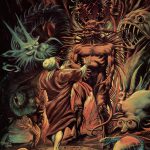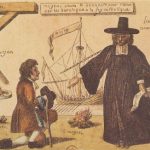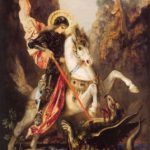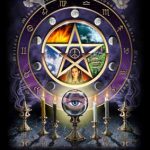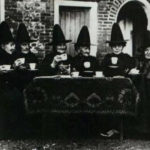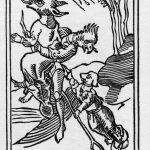The Babylonians and Assyrians believed that myriads of evil spirits or devils hovered about the face of the earth and caused all the evils of humanity; and that there was a special class of these malignant beings who moved about at night, inspired bad dreams, and even sucked the blood of sleepers.
This belief in legions of devils passed through the Jews, into Christianity, and the particular belief in night-prowlers and blood-suckers or entrail-suckers (vampires, harpies, etc.) obtained currency among the Greeks and Romans. The Greek and Latin word strix, which properly means the screech-owl was applied to these dreaded night-birds.
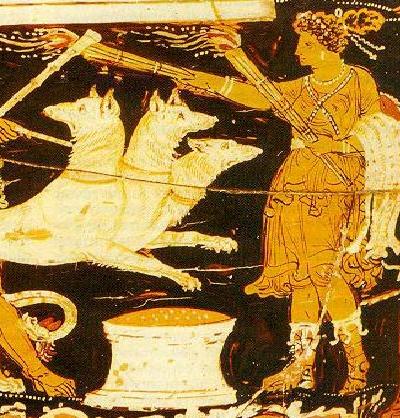
The Romans, as the Babylonians, believed very emphatically in magic and its evil powers. The magician was exposed to a sentence of death in Roman law and was often executed. The ground of the law was, of course, purely secular. The practicer of black magic was dangerous to the community.
Greek mythology and most of the pagan religions put emphasis on witchcraft. Circe, found in the legends of Greek mythology, was a witch or sorceress who beguiled sailors lost at sea to approach her island where she could shape shift them into animals. She is recalled in The Odyssey where she was outwitted by Odysseus. Another ancient Greek witch was Medea, noted for her use of magic to aid the bold adventurer Jason in the quest for the Golden Fleece.
Furthermore, Hecate was a Greek titan/witch whose name also appears in Macbeth. Morgan Le Fay tormented King Arthur and his knights.The volva told Odin how the Aesir gods would fall. Some Native American tribes feared witches, such as the Iroquois, Pueblo and Navajo (Dina). Certain African tribes believe in female witches who ride trained hyenas to meetings and cast evil spells.
Early Christians were also persecuted under the pagan rule of the Roman Empire. The raids and land grabs of the Vikings were another example of pagan atrocities committed against Christians, especially in Ireland and Britain where the Norsemen sacked monasteries, killed monks, and seized slaves and booty.
Emperor Constantine had made Christianity the official religion of the Roman Empire, then centered in Constantinople. After his death subsequent imperial decrees were aimed at stamping out Paganism. An edict in 340 AD outlawed pagan practices in the Eastern Empire and was imposed universally in 342. In 346 the practice of pagan worship became punishable by death.
Following this, there were periods when paganism was decriminalized and openly practiced again, especially under the Roman ruler Julian, who himself became a pagan being inspired by the mysteries of ancient Greece. But eventually paganism lost favor to Christianity.
At the end of the tenth century Abbot Regino made a large collection of Church laws and canons, and one of these is concerned with witches. It says:
“And we must not overlook this, that certain wicked women, who have turned aside to Satan, seduced by the illusions and phantasms of the demons, believe and profess that during the night they ride with Diana the goddess of the pagans [another version says, or with Herodias] and an innumerable crowd of women on certain beasts, and pass over great spaces of the earth during the night, obeying her commands as their mistress, and on certain nights are summoned to her service. Would that these had perished in their perfidy and had not dragged many with them to destruction! For an innumerable multitude, deceived by this false opinion, believe that these things are true and so depart from the faith and fall into the error of the pagans, believing that there is some divinity apart from the one God,…”

